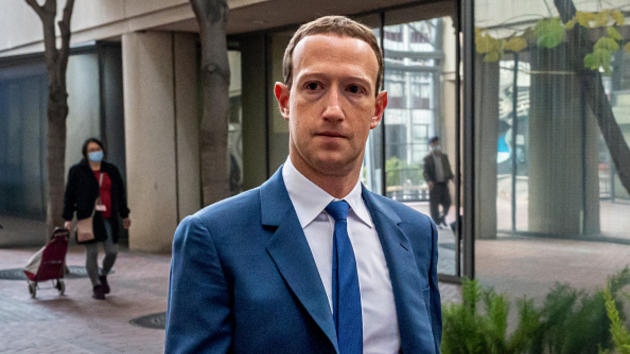Unions made 2023 the year of the strike. What will happen next?
Written by ABC Audio ALL RIGHTS RESERVED on December 26, 2023
(NEW YORK) — Greg Iwinski, a late-night TV writer, walked off the job this year amid a dramatic surge of workers going out on strike — and he says the trend made its presence felt at the bargaining table.
“The ammunition that a company has, whether it’s an automaker or a TV studio, is telling you that a strike won’t work — your collective action won’t help,” Iwinski, who helped broker an agreement that delivered significant pay increases for 11,000 Hollywood writers, told ABC News.
A slew of contract breakthroughs over the course of 2023 dispelled that notion, Iwinski said. “If you hold out long enough, you will break them and win,” he said.
The Alliance of Motion Picture and Television Producers, or AMPTP, which negotiated on behalf of the TV studios, did not immediately respond to ABC News’ request for comment.
Iwinski was among more than 500,000 workers who went out on strike nationwide in 2023, nearly tripling the figure recorded over the same period a year earlier, according to data through the end of October from Cornell University’s School of Industrial and Labor Relations shared with ABC News.
The sharp escalation in worker protests arose from widespread dissatisfaction with sluggish wage gains, which in many cases had failed to keep up with rapid price hikes, experts told ABC News.
Emboldened by a tight job market and growing approval of unions, workers took a step that often frightens employees concerned about losing their livelihoods, they added.
“This is a demonstration of the anger that American workers have about their position in the economy,” Erik Loomis, a labor professor at the University of Rhode Island and author of “A History of America in 10 Strikes,” told ABC News.
“We’re in an era where people are seeing the strike as a tool once again,” Loomis added, noting that the number of workers on strike this year was last seen in the early 1980s.
Labor militancy will continue in 2024 since worker disaffection remains, experts added, though the potential for fewer contract disputes at large unions could result in a decline in the number of workers walking off the job.
Over a four-decade period beginning in the late-1970s, wages largely flattened, increasing 0.2% per year on an inflation-adjusted basis for a typical worker, a Harvard Business Review analysis found.
The cumulative effects of sluggish wage growth collided with sky-high inflation in recent years, leaving workers frustrated over diminished spending power, Johnnie Kallas, project director of Cornell University’s Labor Action Tracker, told ABC News.
“The root cause is the pent up pressure of long-term wage stagnation,” Kallas said. “That has really come home to roost.”
This year, that upswell of anger coincided with contract disputes involving some of the nation’s largest unions.
SAG-AFTRA, a union representing roughly 160,000 actors, went out on strike for nearly 120 days, culminating in a 3-year contract that raised wages by roughly 14%.
The United Auto Workers, a union representing 150,000 employees at major car markers, ended a weekslong strike after a set of agreements that delivered a roughly 25% raise over a 4-year period.
Roughly 75,000 health care workers at Kaiser Permanente won major wage gains after a work stoppage, as did thousands of TV writers like Iwinski.
While the number of workers on strike increased significantly this year, the total work stoppages remained roughly flat. Through Dec. 20, there were 405 strikes in 2023 compared with 407 strikes over that same period a year prior, according to Cornell University’s Labor Action Tracker.
The major uptick in striking workers this year owes in part to the incidental confluence of contract deadlines at large unions, Thomas Kochan, an emeritus management professor at the Massachusetts Institute of Technology, told ABC News.
“Some of it is contingent because we did have a significant number of larger contracts,” Kochan said, acknowledging that the scale of work stoppages could ebb next year.
Still, the certainty of some strikes, as well as the credible threat of others, should deliver workplace improvements for workers, Kochan added.
“It’s clear that rank-and-file workers are prepared to strike,” Kochan said.
Potential workplace disputes dot next year’s calendar, even if few approach the size of the high-profile confrontations of 2023.
Contracts covering 60,000 film and television crew workers are set to expire in July; while an agreement concerning 220,000 postal workers will come up for renewal in September 2024, according to an analysis from the pro-worker outlet Labor Notes.
“I don’t know if we’ll see the same number of high-profile strikes next year but I think we’re still going to see a lot of strikes,” Lynne Vincent, a professor of industrial and labor relations at Syracuse University, told ABC News.
“2023 set the stage that things are different,” Vincent added. “That conversation will continue in 2024.”
Copyright © 2023, ABC Audio. All rights reserved.






